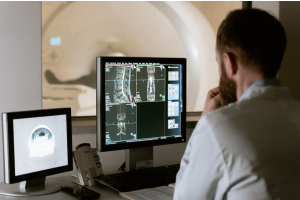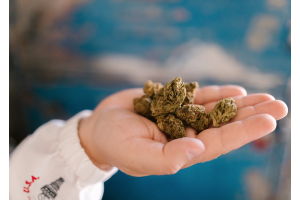Blow Out, Driving Under The Influence

Driving under the influence of any substance can potentially be a very dangerous choice,
Many prescription painkillers and other common medications come with a warning label explaining that a common side-effect could be delayed reactions or drowsiness. Millions of people rely on these medicines just to go about their daily lives, yet they have the potential to unknowingly put themselves and others at risk should they have a lapse in concentration whilst driving. While we all know the dangers of drink-driving, and we will have all seen the tragedies that this can cause, less is known about how significant a risk there is to driving while under the influence of other medicines and, of course, medical cannabis. No right-minded person would choose to drive a vehicle when they felt impaired, but it does happen. So, how can we know if we are too high to drive and is it possible to accurately assess an individual’s competency just because they appear to have consumed cannabis?
Over the past few years, technology has allowed for law enforcement authorities and employers to keep tabs on people’s use of various substances to a much greater extent than ever before. From the level of alcohol in someone’s bloodstream to residual traces of illegal substances in a person’s hair follicles or personal belongings, evidence of recent or historic use of drugs and alcohol can sometimes be used as justification for punishment and persecution. Unfortunately, some sources report that these tests are often inaccurate, with the results being misinterpreted or misrepresented simply for the sake of taking away someone’s civil liberties. While there are numerous potential positive applications for this type of testing, such as allowing people to check their own levels of intoxication before choosing whether or not to drive, there are concerns that the manner in which the legal levels are set and the methods used to apply these tests to enforcing laws will be inherently flawed.
Historically, the idea of getting breathalysed at the side of the road was solely in the realms of dealing with dangerous driving and identifying alcohol intoxication at the point of an incident occurring. In the past decade, however, there has been an increased focus on developing a similar device for the identification of THC in the body. Currently, there are a number of companies investing heavily in rapid THC detection in the hopes of gaining support from law enforcement agencies along with other industries, yet there are numerous factors to consider.
Although it is true that many states have now moved towards decriminalizing cannabis use, many have not. Even in states where medical use is permitted with a prescription there are many people who report aggressive altercations with the police when it comes to suspicions related to cannabis use. Roadside tests designed to assess a person’s competence to drive have long been used for checking on the level of drunkenness a person may exhibit, yet when it comes to the possibility of someone possessing or being under the influence of cannabis it appears that the police response is often far more volatile. With the ‘smell of cannabis’ often being given as the reason for inappropriate stop and search processes in the United Kingdom, there is a danger that swab/saliva-based testing could exacerbate the situation by further encroaching on human rights.
To make matters worse, there is no agreed level of THC which can directly and accurately be attributed to a certain level of impairment. Individual tolerance levels have a huge level of variance over time and people can be affected completely differently from one strain to another. Furthermore, the dissipation of THC into the bloodstream over time is not a constant as it can be altered by the levels of other chemicals or substances within the individual. Essentially this means that the ‘one size fits all’ approach of applying a set level as being applicable to any person under suspicion is flawed from the start. With the lack of real understanding from those who set the laws, there is a danger that trave levels of THC in the saliva could be used to falsely accuse people of consuming at a time which fits a narrative.
I remember when I was pulled over and breathalysed for alcohol whilst driving back from a bar at night, simply because I was seen leaving the premises (I had been working there), so what could be seen as enough evidence to see me stopped and searched for potential cannabis use? Don’t get me wrong, I think that law enforcement and traffic officers do a great job of keeping the roads safe but the idea of using unreliable technology to enforce standards that are unproven and inaccurate doesn’t fill me full of confidence.
From my own experience, I feel like I can tell the difference between being lightly buzzed and aware of my surroundings a while after I’ve smoked to being barely able to keep my eyes open or my thoughts on track. Sometimes I might need to go somewhere and choose to walk instead because it feels like the right thing to do, while at other times I might just wait a half hour or so before heading out to do what I need to. It’s even more difficult when you live somewhere that still persecutes for possession, as there is a chance that these tests could be used to punish people unfairly and the idea that a place of work might sack you for having trace levels in your system through passive inhalation shows that there is long way to go before these ideas are delivered effectively.
Some charities suggest that a move towards more testing, in public or in the work place, is actually counter-productive to us moving towards a more accepting and understanding society. As opposed to trying to ‘catch people in the act’, there have been suggestions that better education in relation to the effects of cannabis and how it can affect our judgement is needed. Too much time and effort has been spent on demonizing it over the years, which has had the counter effect of leaving any kind of useful information out of reach for many. In the same way that people might reconsider getting behind the wheel of a vehicle after a few beers, better education would encourage people to look out for each other and avoid letting anyone drive when they’re clearly too high.
Written and Published by Psy-23 in Weed World Magazine issue 160
Featured Image: Pexels












Validate your login